The best bike computers enable you to measure your performance, log rides on apps such as Strava and navigate. The majority provide turn-by-turn guidance.
Garmin dominates the market, with units ranging from the diminutive Edge 130 Plus to its flagship Edge 1050. Wahoo is not far behind, while brands including Sigma and Hammerhead are giving the road and mountain bike GPS cycling giants a run for their money with useful features and sharp pricing.
Our reviews are never sponsored and are always based on real-world use by our impartial road and mountain bike testers. We recommend the Garmin Edge 1040 Solar as the best overall bike computer. It's packed with impressive training functions and its solar charging means it has a massive battery life.
Keep reading to see all our picks or jump to the end to read our buyer's guide to cycling computers.
SQUIRREL_PLAYLIST_10137826
Editor's note: this list was updated on 11 February 2025 with our Hammerhead Karoo 3 review.
Best bike computers 2025 as reviewed by our expert testers
Best overall: Garmin Edge 1040 Solar
SQUIRREL_TEXT_13076461
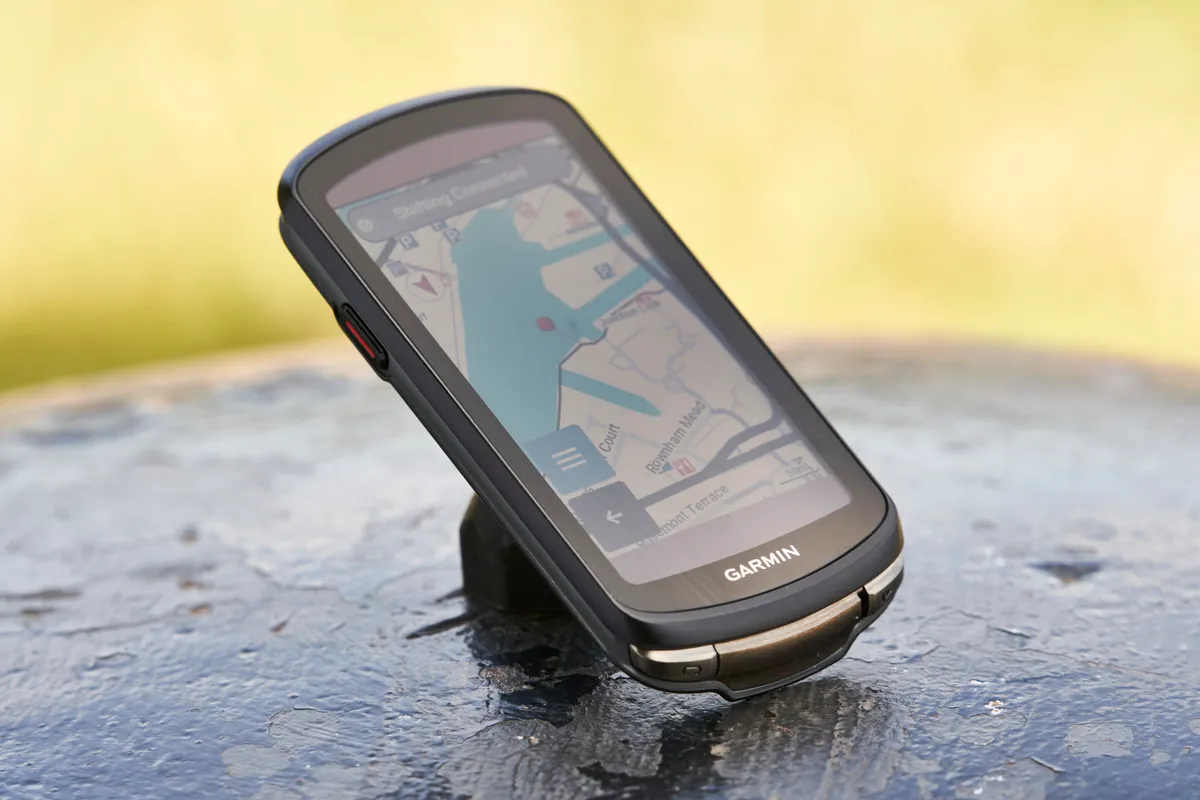
- £629.99 / $749.99 / €749.99 / AU$1299.99 as tested
- Pros: Large screen; solar charging
- Cons: Takes up lots of bar space; screen can be hard to read
Garmin’s Edge 1040 Solar computer has a neat trick: there’s a solar glass screen that can extend your runtime up to an industry-leading claimed 45 hours. We regularly gained 10 minutes per hour of extra charge on summer rides. There’s a non-solar option as well, which costs less.
Size-wise, it’s a large device, a tiny bit larger than the Edge 1030 Plus, but it’s got 64GB of memory, so it can store twice as much data. The Edge 1040 is much more of a training aid than just a ride recorder, so it gives you your training status, recovery time and more. It’s highly configurable and records loads of training stats.
It links automatically into the best-in-class Garmin Connect training infrastructure, giving you route planning using Garmin’s heatmaps from its rider community and lots of post-ride analysis options that others make you pay for. Garmin Connect also enables you to integrate data from Garmin smartwatches, to give you 24/7 fitness and training status analysis.
- Read more: Garmin Edge 1040 Solar review
Specs
Navigation: Full colour with turn-by-turn routing and rapid rerouting | Training data: A huge number of training metrics including training status and load, VO2 Max and recovery time | Connectivity: ANT+, Bluetooth, WiFi, USB-C | Compatibility: ANT+, Shimano Di2, SRAM eTap, Campagnolo EPS, Garmin Varia | Size: 59×118×20mm | Screen: 3.5in/89mm colour touchscreen, 282×470 pixels
SQUIRREL_13076461
Best value: Wahoo Elemnt Bolt V2
SQUIRREL_TEXT_13076441
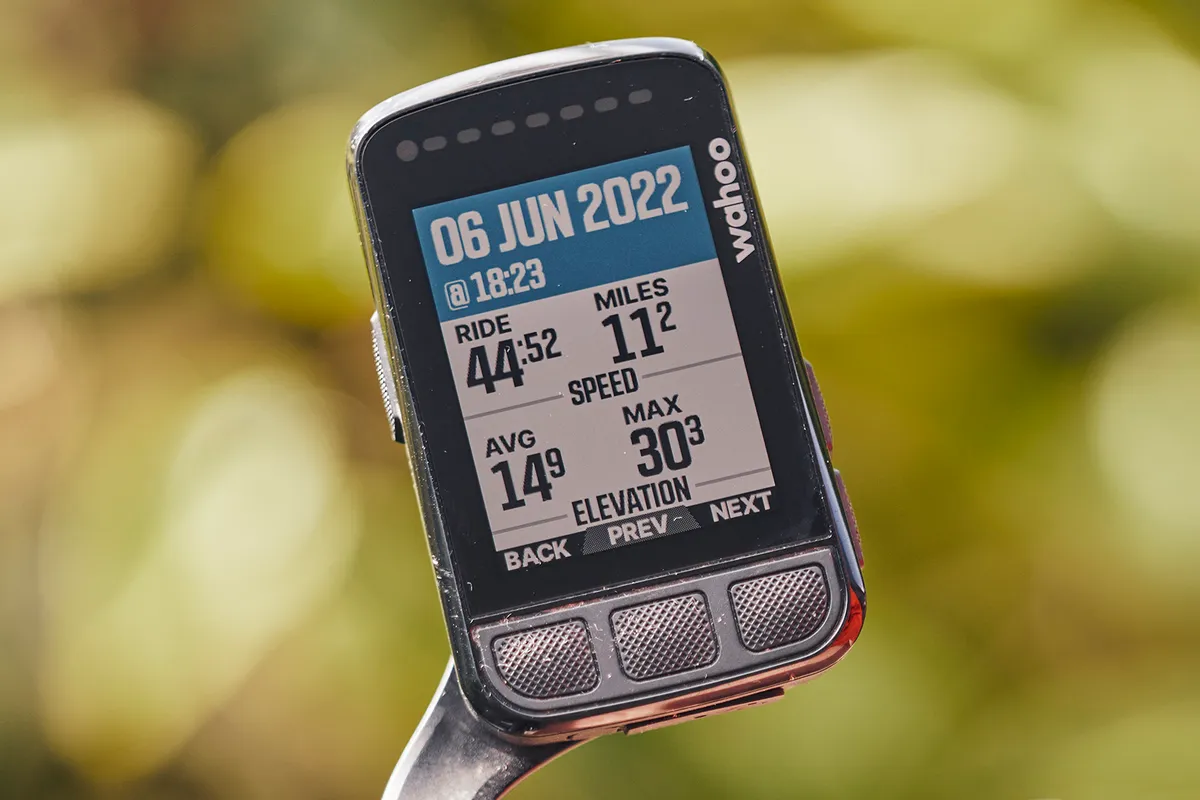
- £264.99 / $279.99 / €279.99 / AU$419.95 as tested
- Pros: Colour screen; easy to set up; sleek and compact
- Cons: Relatively small screen; on-device navigation
The Wahoo Elemnt Bolt V2 has it all when it comes to user interface, with all of the set-up done via a smart app.
It now offers a colour screen, smart navigation, USB-C charging and improved battery life over the original Bolt.
It syncs seamlessly with most third-party apps and performs well on the bike and on the road, as well as on a smart trainer.
If you’re looking for a GPS computer to track your performance with over 170 functions and an impressive 15-hour battery life all in a neat, minimalist package, then the Bolt V2 is for you.
You’ll be best off doing your planning before you set out on a ride. The mapping capabilities aren’t as good as on Hammerhead and Garmin computers, but the Bolt is more affordable.
- Read more: Wahoo Elemnt Bolt V2 review
Specs
Navigation: Colour screen is good for navigation but limited by screen size | Training data: Over 170 functions | Connectivity: USB-C, Bluetooth, ANT+ | Compatibility: Apple IOS, Android, wireless training sensors such as power meters | Size: 47×77mm | Screen: 55.9mm, 240×300 pixels
SQUIRREL_13076441
Most desirable: Garmin Edge 1050
SQUIRREL_TEXT_13086848

- £650 / $700 / €700 / AU$1,170 as tested
- Pros: Impressive screen; deep feature set; great connectivity
- Cons: Fiddly on-device mapping; might not fit on previous mounts
The Edge 1050 is the brand's flagship model and ticks all the boxes for features and compatibility.
We found it did the basics well during our tests. The hardware and user-interface improvements make the device easier to live with, although on-device mapping remains fiddly.
The computer has plenty of social features that look set to make it future-proof.
- Read more: Garmin Edge 1050 review
Specs
Navigation: Best in class | Training data: Plenty of training metrics that can be impressively customised | Connectivity: ANT+, Bluetooth, WiFi, USB | Compatibility: ANT+, Shimano Di2, SRAM eTap, Campagnolo EPS, Garmin Varia | Size: 60.2x118.5mmx16.3mm | Screen: 88.9mm colour touchscreen, 480x800 pixels
SQUIRREL_13086848
Sigma ROX 11.1 Evo
SQUIRREL_TEXT_13096119
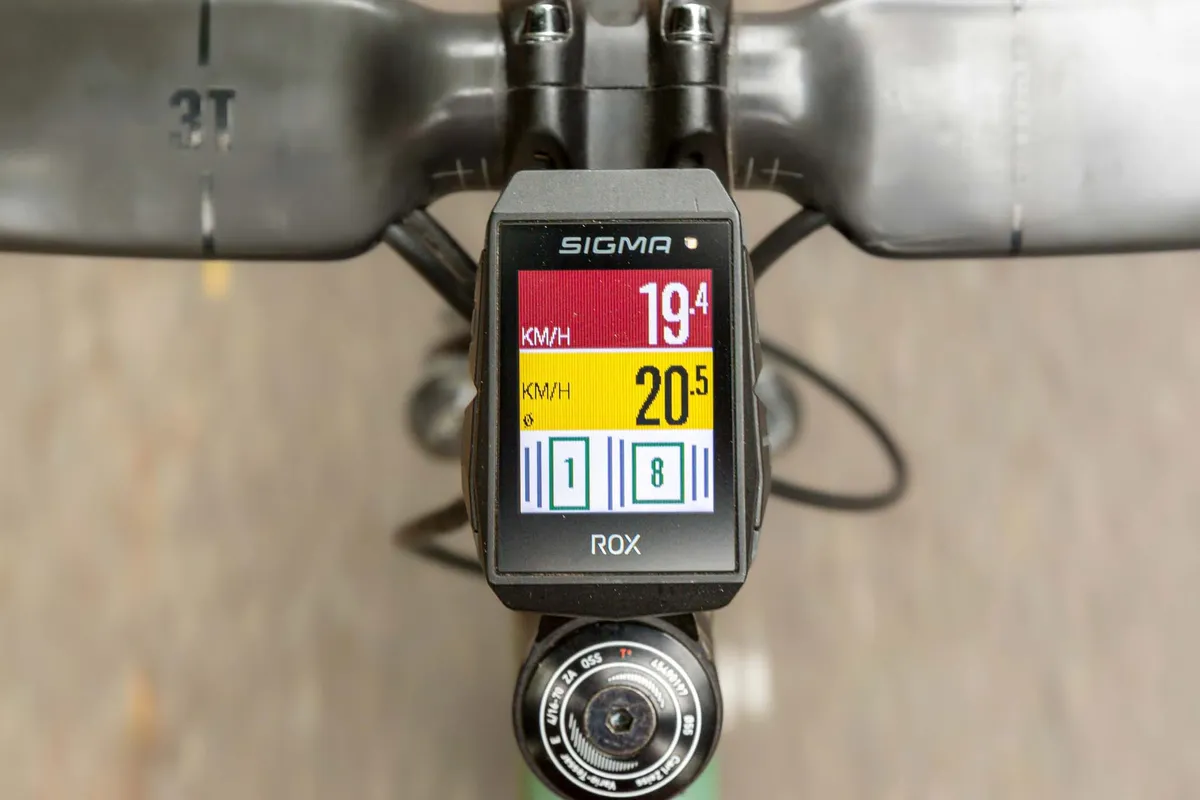
- Price: £249.99 as tested
- Pros: Packs lots of tech for its size; colour-coded screen; customisable data
- Cons: No touchscreen; basic navigation
Sigma may not be as well-known as the likes of Wahoo and Garmin, but its ROX 11.1 Evo is an excellent bike computer, combining a user-friendly interface with riding and training data.
The unit has a 1.77in display, which is smaller than many other bike computers, but this means it sits unobtrusively on your handlebar.
The computer has over 150 operations, including an emergency crash notification feature, and you can save up to 20 profiles to display different information, making it great if you ride across cycling disciplines.
When it comes to mapping, you can upload routes from Komoot in the computer’s smartphone app.
The display only shows a breadcrumb trail, which is fine for road and gravel rides, but not so great for mountain biking.
If simplicity is what you’re after, the ROX 11.1 Evo is a good bet.
- Read more: Sigma ROX 11.1 Evo review
Specs
Navigation: Limited to a breadcrumb trail, but it does sync with Komoot | Training data: Over 150 functions | Connectivity: BLE, ANT+ | Compatibility: Heart rate, cadence, electronic shifting, power meter, smart trainer | Size: 46.8x66.1x20.8mm | Screen dimensions: 1.77in, 128x160 pixels
SQUIRREL_13096119
Bryton Rider 420T
SQUIRREL_TEXT_13149546
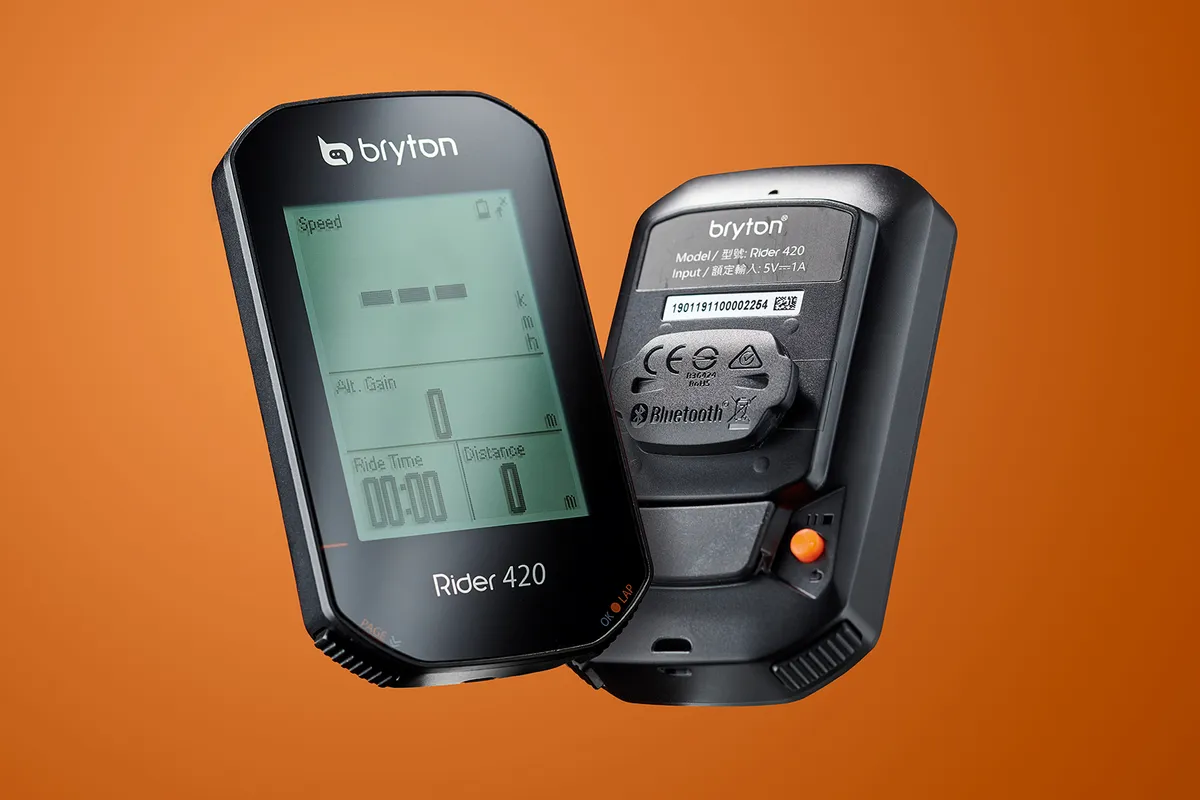
- £190 / $230 / AU$340 as tested
- Pros: Easy to use; long battery life
- Cons: Awkward on/off switch
The Bryton 420T is a competitively priced cycling computer that comes with a heart rate monitor and cadence sensor included. The computer is also available as a standalone 420E head unit (£104.99).
The cycling computer has an impressive 77 functions, including everything you need for training, such as heart rate and power readings, which it can present as averages and maximums.
The 420T does not have mapping, making it more of a training tool than a computer that will help you explore your surroundings. You can load a GPX to the 420T for basic turn-by-turn navigation.
A claimed 35-hour battery life after a four-hour charge sets the Bryton 420T apart from the competition.
- Read more: Bryton 420T review
Specs
Navigation: No mapping capabilities but can be used with a GPX file for turn-by-turn navigation | Training data: Speed, distance, heart rate, riding time, power (with a power meter), gradient, altitude, metres climbed, cadence, calories burned and more | Connectivity: Bluetooth, BLE, USB | Compatibility: ANT+ and Bluetooth, heart rate, cadence, speed, power meter and smart trainer, Shimano Di2, SRAM, eTap, Campagnolo EPS | Size: 49.9×83.9×16.9mm | Screen: 58.4mm diagonal (2.3in), 128×160 pixels, grayscale mono LCD
SQUIRREL_13149546
Garmin Edge 530
SQUIRREL_TEXT_13076446
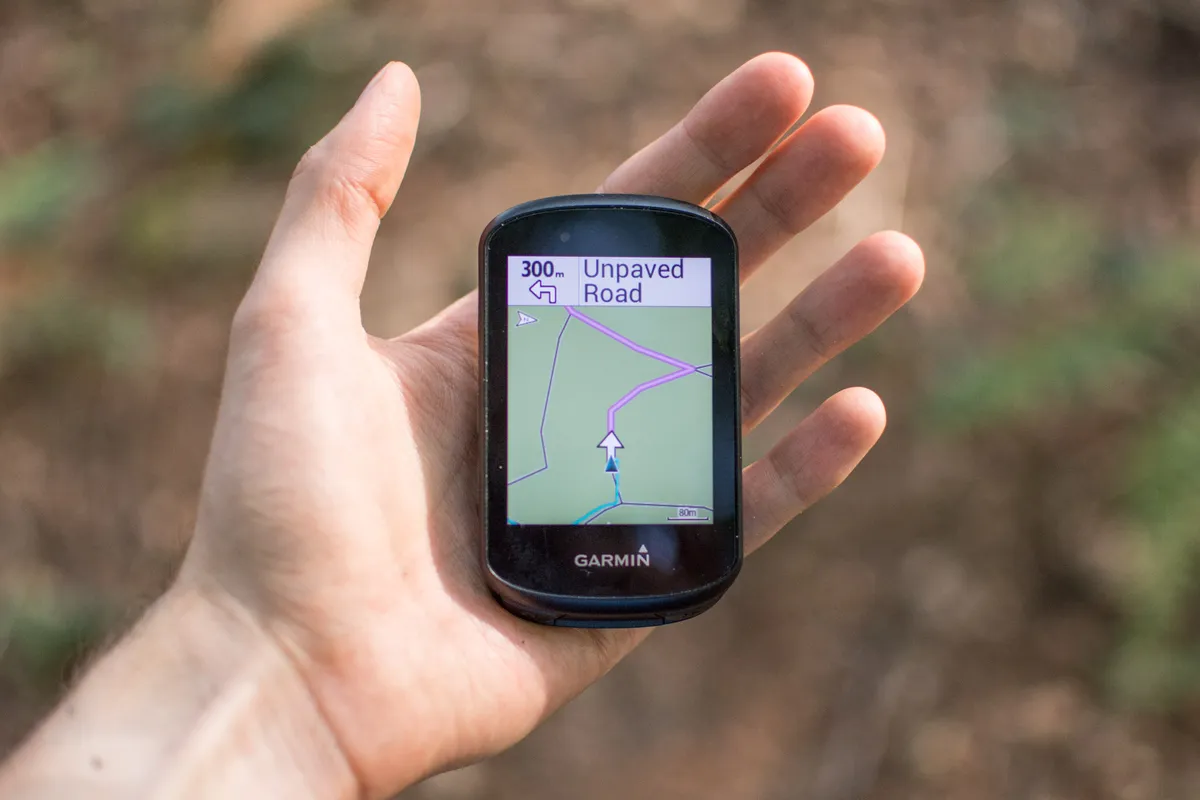
- £259.99 / $299.99 / AU$499 as tested
- Pros: Huge range of features; seamless ride uploads; great battery life
- Cons: Unintuitive menu; frustrating map interface
The Garmin Edge 530 is a hugely capable GPS computer packed with features aimed at serious enthusiast cyclists who want to track their training.
Externally almost identical, the Edge 530 shares almost all of its features with the more expensive Edge 830, but uses external buttons rather than a touchscreen.
As a result, navigating menus and setting up ride profiles can be time-consuming and fiddly, but once you've got those sorted it's very easy to live with.
Navigating pre-planned courses is straightforward and the colour display is crisp and easy to read. With added sensors (available separately or as a bundle with the device), the Edge 530 offers a wealth of performance-tracking data.
- Read more: Garmin Edge 530 review
Specs
Navigation: Good, aimed primarily at following courses created in advance, with excellent turn-by-turn instructions and hazard warnings. Non-touchscreen means browsing map is mostly a waste of time | Training data: Speed, altitude, power, heart rate, cadence, calories, gears (for electronic drivetrains), distance, time, temperature, navigation, performance monitoring and more | Connectivity: Micro-USB, Bluetooth, BLE, WiFi | Compatibility: ANT+ and ANT+ shifting, power meter and bike trainer, Shimano Di2, Vector power meter, Garmin Varia and Virb | Size: 85×51×16mm, 20mm total including protruding mount | Screen: 38×51mm (2.6in diagonal) colour screen (non-touchscreen), 246×322 pixels
SQUIRREL_13076446
Garmin Edge 830
SQUIRREL_TEXT_13076447
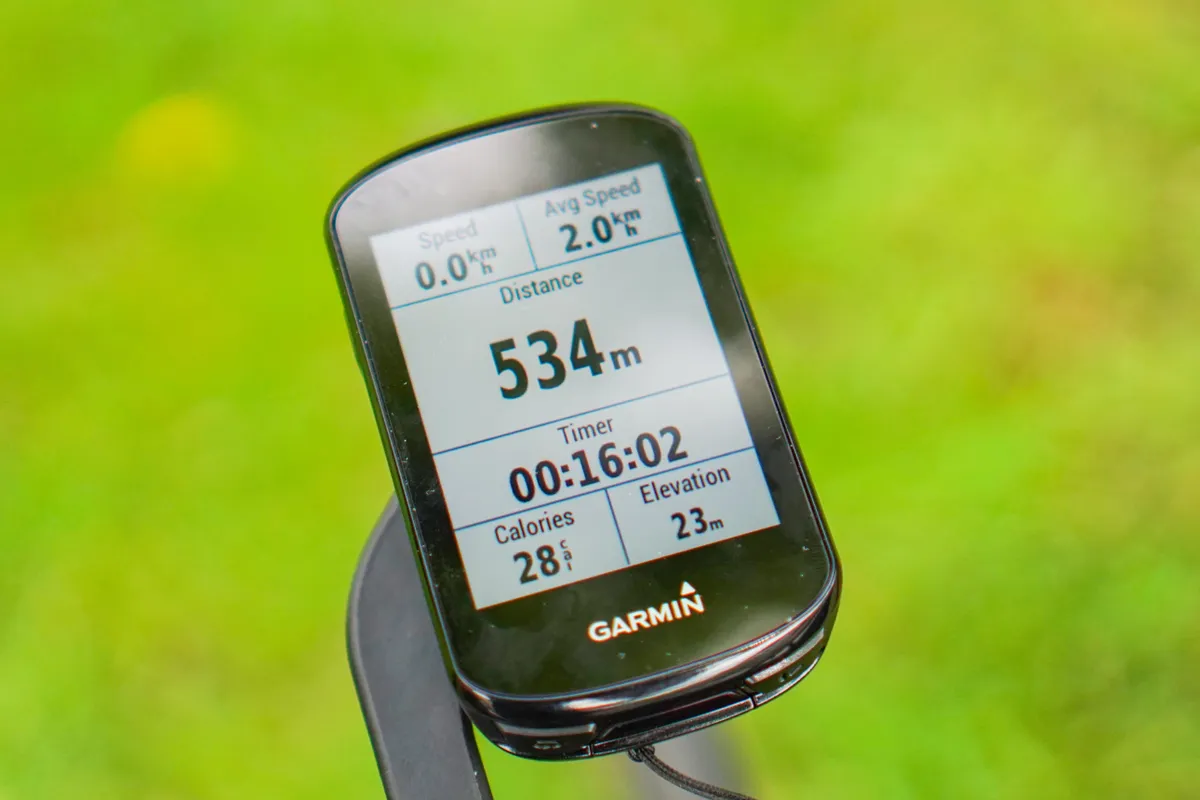
- £349.99 / $399.99 / €399.99 / AU$599 as tested
- Pros: Diverse features; comprehensive training and navigation device
- Cons: Route creator doesn't always choose the most sensible option
With an impressive array of interesting and useful – if a little clunky at times – features, the Edge 830 is a true class-leading GPS that offers plenty of useful functions above and beyond its competition.
The maps and navigation features are easy to understand and it’s relatively simple to program in routes. On-device route calculation isn’t great, though, and it certainly didn’t live up to Garmin’s claims of riding like a local.
The on-device data and displays are fantastically simple to read when you’re on the move, but it’s certainly worth investing in the additional sensors if you don’t already own compatible ones.
Overall, the Edge 830 has a fantastically diverse feature-set that makes it one of the most comprehensive training and navigating devices money can buy.
- Read more: Garmin Edge 830 review
Specs
Navigation: Maps and navigation features are easy to understand and it’s relatively simple to programme routes. On-device route calculation isn’t great, though | Training data: Speed, altitude, power, heart rate, cadence, calories, gears (for electronic drivetrains), distance, time, temperature, navigation, performance monitoring and more | Connectivity: USB, Bluetooth, BLE, WiFi | Compatibility: ANT+ and ANT+ shifting, power meter and bike trainer, Shimano Di2, Vector power meter, Garmin Varia and Virb | Size: 48×74.5mm | Screen: 50×82mm, 246×322 pixels, colour touchscreen
SQUIRREL_13076447
Garmin Edge 840 Solar
SQUIRREL_TEXT_13076445
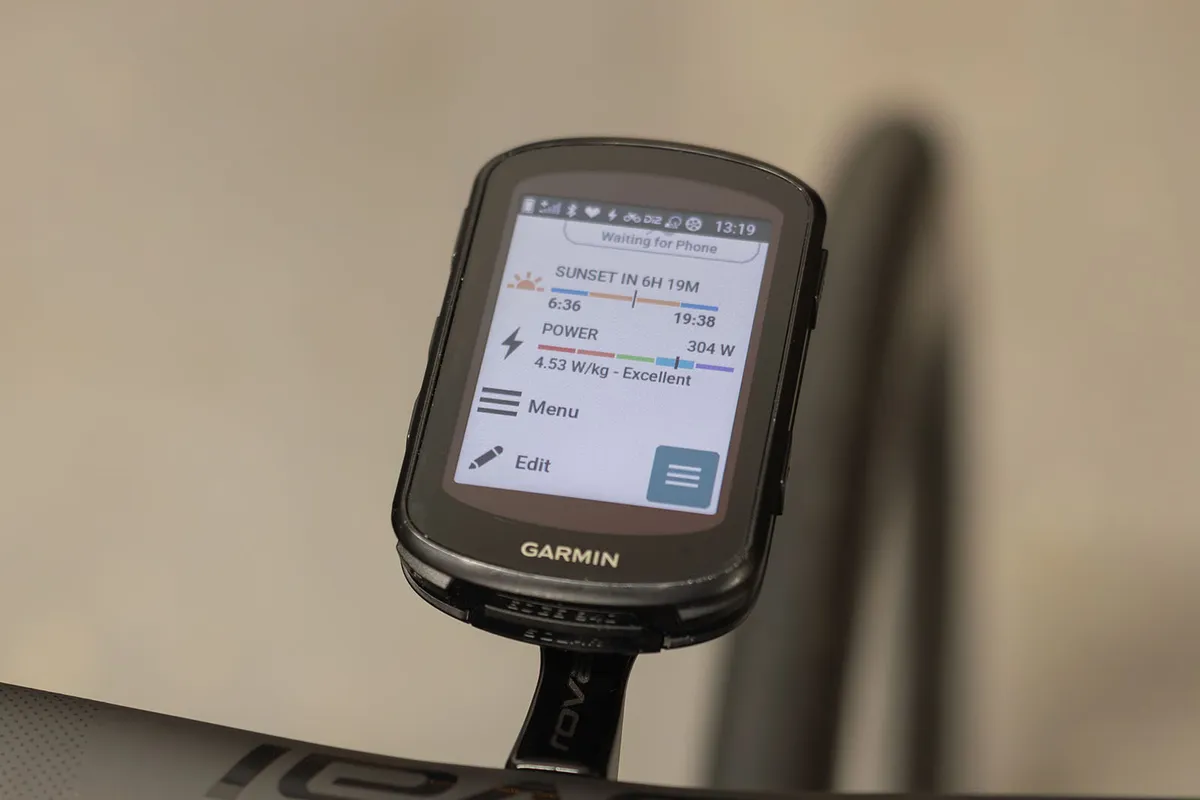
- £520 / $550 / €600 / AU$879 as tested
- Pros: Mapping; touchscreen; compact
- Cons: Solar function is limited in dull conditions; price
The Garmin Edge 840 Solar is a top-notch bike computer with spotless navigation and a user-friendly touchscreen.
New functions include ClimbPro and Garmin Music, which worked okay for us despite some glitches.
However, solar charging adds £70/$50 to the cost of the standard version. In the UK, this doesn't boost the already respectable battery life enough to justify the outlay.
Tech such as GNSS (Global Navigation Satellite System) has trickled down from the likes of the Edge 1040 to the benefit of mapping. But the Edge 840 screen is smaller than the more premium model.
The Edge 840 Solar also receives the new Garmin touchscreen homepage. This displays some of the mid-range computer's many training metrics, your last ride data and the most recently added route.
The homepage has more customisation options than before (for example, data fields). Or, you can now tweak device settings on your phone through the Connect app.
- Read more: Garmin Edge 840 Solar review
Specs
Navigation: Full colour including turn-by-turn directions and speedy rerouting | Training data: A vast array of training metrics such as training status and load, VO2 Max and recovery time | Connectivity ANT+, Bluetooth, WiFi, USB-C | Compatibility: ANT+, Shimano Di2, SRAM eTap, Campagnolo EPS, Garmin Varia | Size: 57.8×85.1×19.6mm | Screen: 2.6in/66mm colour touchscreen, 246x322 pixels
SQUIRREL_13076445
Garmin Edge 1030 Plus
SQUIRREL_TEXT_13076478
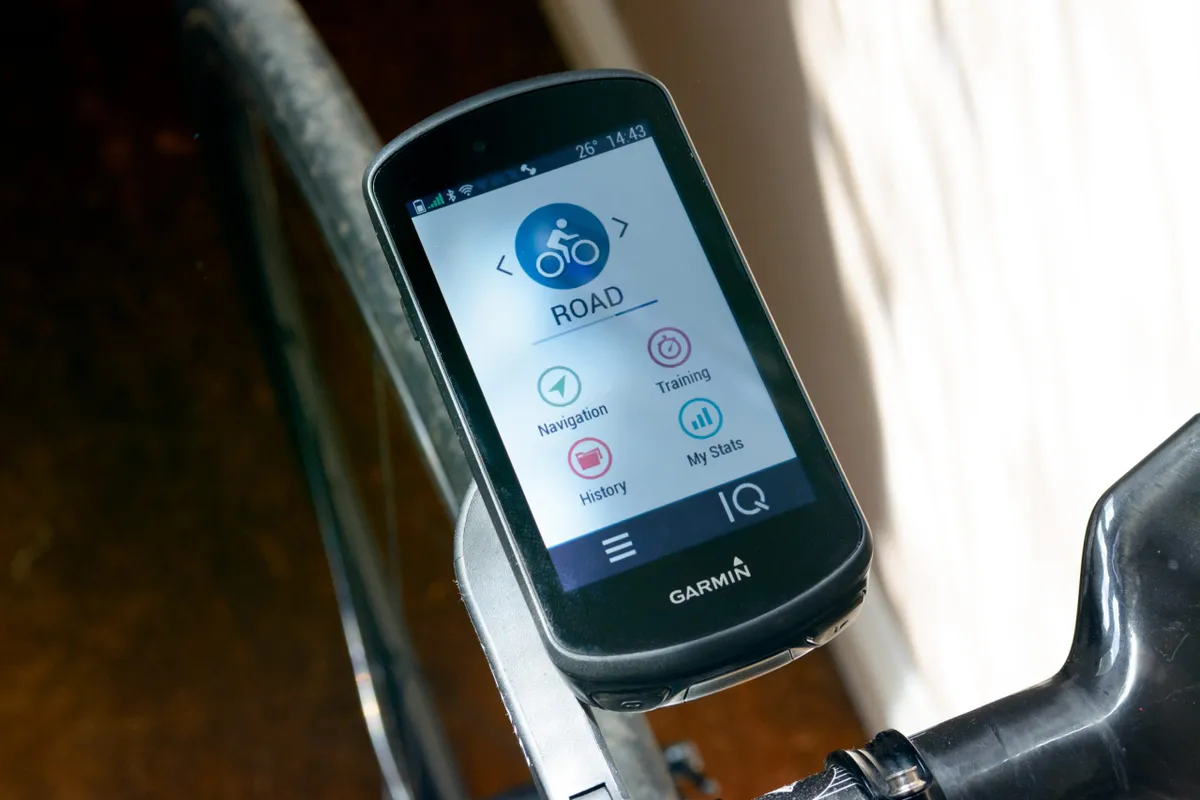
- £519.99 / $599.99 / €599.99 / AU$999 as tested
- Pros: Responsive, bright screen; battery life; every metric imaginable
- Cons: Premium over Edge 830; no phone-based data screen setup
The Edge 1030 Plus gives you every single feature you could ever want in a bike computer with the same format, but an updated processor and an improved touchscreen over the now-discontinued Garmin Edge 1030.
The battery life is a claimed 24 hours, though this can be extended to 48 hours if you run the computer in a stripped-down mode. It’s compatible with Garmin’s Charge power pack and Edge Power Mount if you want even more recording duration.
The SD card slot has been removed, but internal storage has grown to 32GB. The Trailforks trail database is also installed as standard on the unit.
- Read more: Garmin Edge 1030 Plus review
Specs
Navigation: Best in class with a faster processor for quick route recalculation | Training data: A bewildering number of training metrics that can be customised to your heart’s content | Connectivity: ANT+, Bluetooth, WiFi, USB | Compatibility: ANT+, Shimano Di2, SRAM eTap, Campagnolo EPS, Garmin Varia | Size: 58×114×19mm | Screen: 3.5in/89mm colour touchscreen, 282×470 pixels
SQUIRREL_13076478
Garmin Edge Explore 2
SQUIRREL_TEXT_13079802
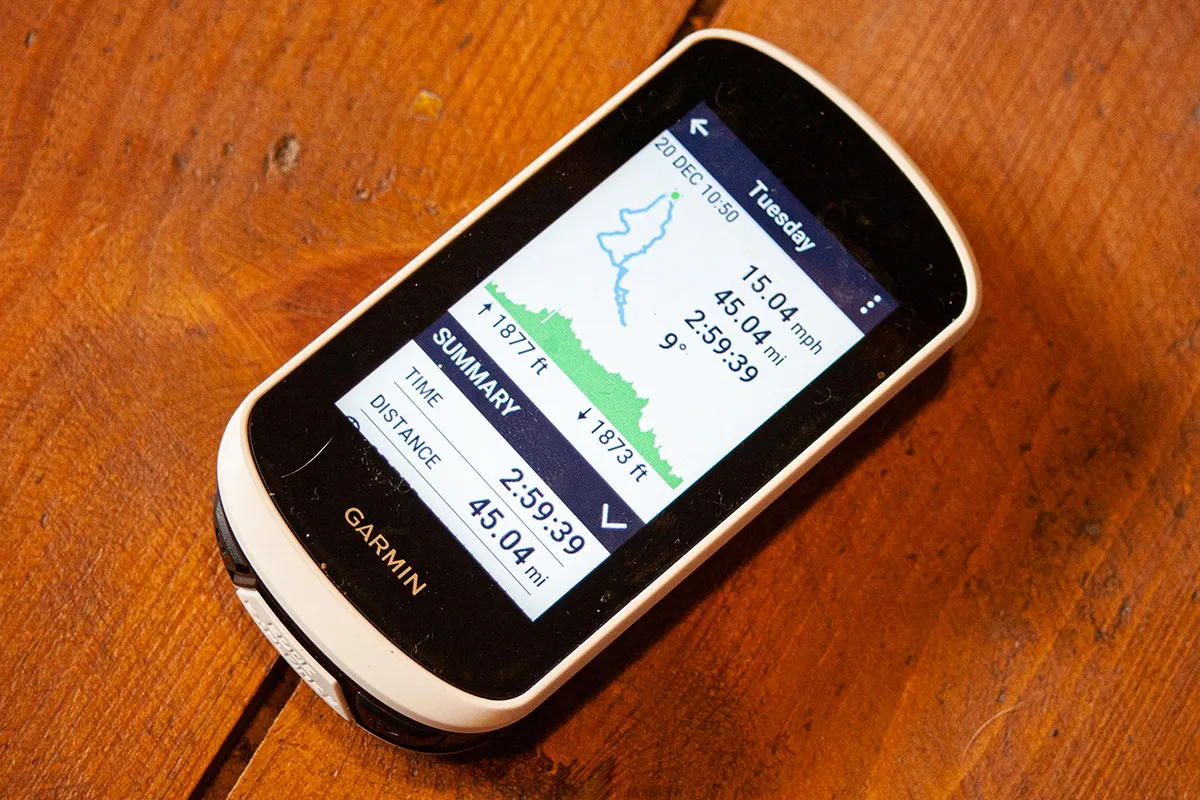
- £250 / $300 / €300 / AU$500 as tested
- Pros: Easy to use; great navigation; well-priced
- Cons: Lacks data for some riders
The Edge Explore 2 majors on navigation functionality and strips out most of the training tools offered by Garmin's higher-priced computers. Its colour touchscreen is bright, with a size midway between the Edge 830 and the Edge 1040. Battery life is around 16 hours.
It's easy to search for a location and the Edge Explore 2 will use heatmaps to direct you via the most cycled routes. You can overlay maps with a high-traffic indicator based on data from a linked phone, which can also provide weather information. Rerouting is efficient if you go off course.
There's no WiFi connectivity, but rides can be uploaded to Garmin Connect and through to Strava via Bluetooth and your smartphone. You can use the Edge Explore 2 to control a smart trainer.
This is a good option if you want the cycling computer essentials and don't need the full suite of training data.
- Read more: Garmin Edge Explore 2 review
Specs
Navigation: Clear screen with detailed maps, efficient rerouting, climb profiles, heatmaps and high-traffic indicator | Training data: Live power and heart rate from connected devices, recovery time. Omits the more detailed training data found on other Edge units | Connectivity: ANT+, Bluetooth, USB-C | Compatibility: ANT+, Garmin Varia | Size: 106×56×21mm, 104g | Screen: 3in/76mm colour touchscreen, 240×400 pixels
SQUIRREL_13079802
Hammerhead Karoo 3
SQUIRREL_TEXT_13182588

- £450 / $475 / €500 as tested
- Pros: Great touchscreen sensitivity; SRAM AXS integration; clever routing; frequent updates
- Cons: Audio-alert needs resetting every startup; companion app lacking compared to rivals
Hammerhead's Karoo 3 is a great addition for SRAM AXS users and offers serious competition to Wahoo and Garmin.
The computer has double the amount of RAM at 4GB compared to the previous model, making for fast navigation through screens, with 64GB of storage enabling maps and routes to be uploaded.
While frequent updates mean Hammerhead is always making the device's performance better, we found these delayed our ride departure on a few occasions – although this is a trade-off we're willing to make.
For simply riding, recording and navigation, the Karoo impressed us, and our tester found the route information very similar to Garmin's system.
The hardware proved to be robust in all weather, and the claimed 15 hours or more of battery life is more than ample, especially after the recent battery-saving update.
- Read more: Hammerhead Karoo 3 review
Specs
Navigation: Sensitive screen with detailed maps, great routing, gradient insights, automatic rerouting | Training data: Customizable training plans and Robust Workout Player, real-time data visualisations | Connectivity: ANT+, Bluetooth, USB-C | Compatibility: SRAM AXS, Bluetooth | Size: 102.8mm x 61.7mm x 19.9 mm, 118g | Screen: 3.2in colour touchscreen, 292 pixels-per-inch
Wahoo Elemnt Ace
SQUIRREL_TEXT_13161761

- £549.99 / $599.99 / €599.99 / AU$999.99 as tested
- Pros: Excellent screen; best-in-class mapping; wind sensor; easy to use
- Cons: Large and heavy; rerouting not fully reliable
Released in December 2024, the Wahoo Elemnt Ace does everything a bike computer does as well as its competitors, with our tester Ashley Quinlan declaring it “the best bike computer Wahoo has ever made”.
The computer is big and heavy, but this means it has a large 3.8in touchscreen screen, which makes for easy use when paired with the polished interface.
Mapping is clear and detailed, outperforming the Garmin Edge 1050 in Ashley’s view. The computer has audible direction cues, which is a welcome feature, but rerouting isn’t quite up to scratch.
The most intriguing new feature is the Elemnt Ace’s wind sensor, which provides insight into wind resistance during a ride. This could prove valuable for pro athletes, but it’s debatable how useful the information will be to everyday riders.
But even with the novel wind sensor, the Elemnt Ace is still cheaper than its closest rival, the Garmin 1050.
- Read more: Wahoo Elemnt Ace review
Specs
Navigation: Full-colour with turn-by-turn routing and rerouting, GPS, GLONASS, Galileo | Training data: Comprehensive metrics, including Wahoo Wind Dynamics, although fewer than flagship Garmin computers | Connectivity: Bluetooth, ANT+, WiFi | Compatibility: ANT+, Shimano Di2, SRAM AXS, GoPro | Size: 60.2x118.5x16.3mm | Screen: 3.8in touchscreen, 480x720 pixels
SQUIRREL_13161761
Wahoo Elemnt Roam V2
SQUIRREL_TEXT_13076440
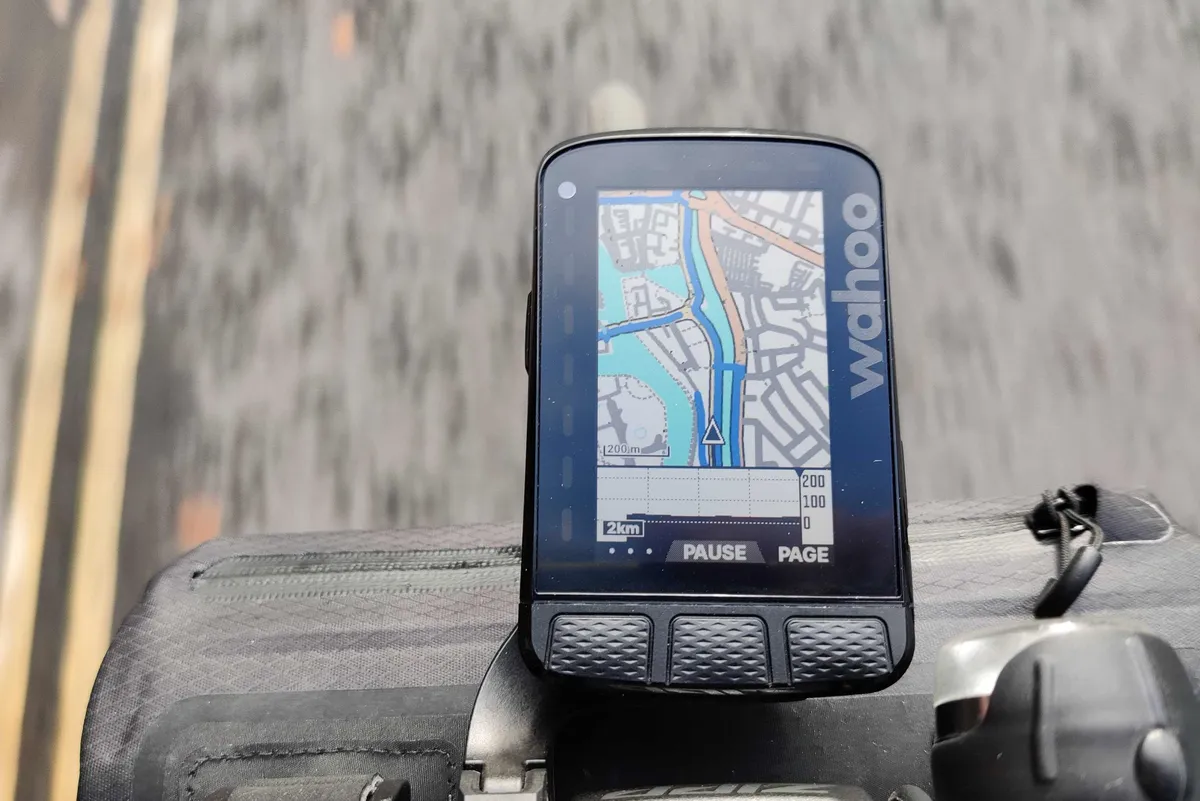
- £349.99 / $399.99 / €399.99 / AU$599.95 as tested
- Pros: Configuration; clear screen; superb app; more memory for mapping
- Cons: No touchscreen
The Wahoo Elemnt Roam V2 takes many of the features of the Elemnt Bolt but puts them in a larger package with a bigger screen for improved mapping and navigation capabilities.
Where's the Bolt's display measures 55.9mm (2.2in) diagonally, the Roam ups this to 68.6mm (2.7in). Both offer a 64-colour screen – used sparingly to highlight key training or map details – and USB-C charging.
Like all of Wahoo's devices, there's no touchscreen, with the computer operated via a series of buttons and setup coming via the Elemnt app. Configuration is very easy, though, as we've come to expect from Wahoo computers.
Screen resolution isn't as sharp as other but, as an easy-to-use device with excellent mapping and data options, this is a smart all-round choice.
- Read more: Wahoo Elemnt Roam V2 review
Specs
Navigation: Larger screen for improved mapping and navigation compared to Wahoo Elemnt Bolt | Training data: Huge range of training data; easy to configure via Elemnt app and read on Roam's display | Connectivity: USB-C, Bluetooth, ANT+ | Compatibility: Apple IOS, Android, wireless training sensors such as power meters | Size: 90x60mm | Screen: 68.6mm, 240×400 pixels
SQUIRREL_13076440
How we test bike computers
We test bike computers out on the roads and trails to make sure they work in multi-discipline environments.
We rack up plenty of miles when testing bike computers to make sure they identify all their strengths and weaknesses.
Our bike computer reviews are based on the following criteria:
- GPS accuracy – how accurate the GPS tracking remains on a ride.
- Screen visibility – how easy is the screen to view?
- Battery life – is there sufficient battery life for long rides?
- User interface – how easy are the menus and screens to navigate?
- Connectivity – how easily does the computer connect to other accessories?
- Additional features – does the computer have additional training or navigation features?
- Value for money – how does the computer compare to others in the market and are you getting a good deal?
Why you can trust BikeRadar
BikeRadar has been an authority on bikes and cycling tech since its inception in 2007, delivering the world’s best riding advice.
We have experts testing all types of bikes, parts, clothing and accessories, from road, mountain and gravel bikes to commuting, bikepacking and electric bikes.
Our reviews are always editorially independent – with no exceptions. Our reviewers comprehensively test all products in the real world, always reflecting on performance, value and the wider market when delivering their verdicts and review ratings.
We have more than 15,000 product reviews available at your fingertips, as well as expert buying, maintenance, training, skills, health and fitness advice.
Our annual Bike of the Year test is an industry benchmark and the BikeRadar team consists of some of the most experienced riders and testers in the business.
Buyer's guide to GPS cycling computers

In the past, cycling GPS devices were primarily for riders who wanted ‘pure’ navigation and trail guidance.
However, their usage has changed greatly and these devices now combine navigation, regular bike computer functions, connectivity to devices such as heart rate monitors and power meters, and lots else into one unit. The GPS is now just as much a dedicated training tool and ride tracker as it once was a navigation unit.
Using GPS technology to provide speed and distance information means it’s no longer necessary to use wheel-mounted magnets and sensors, so switching the computer between bikes has never been easier.
The cycling GPS market is dominated by similar brands to the automotive GPS industry. Garmin is the key player, but brands such as Wahoo, Polar, Bryton, Suunto, Lezyne and CatEye also offer GPS-equipped options.
Navigation or tracking?
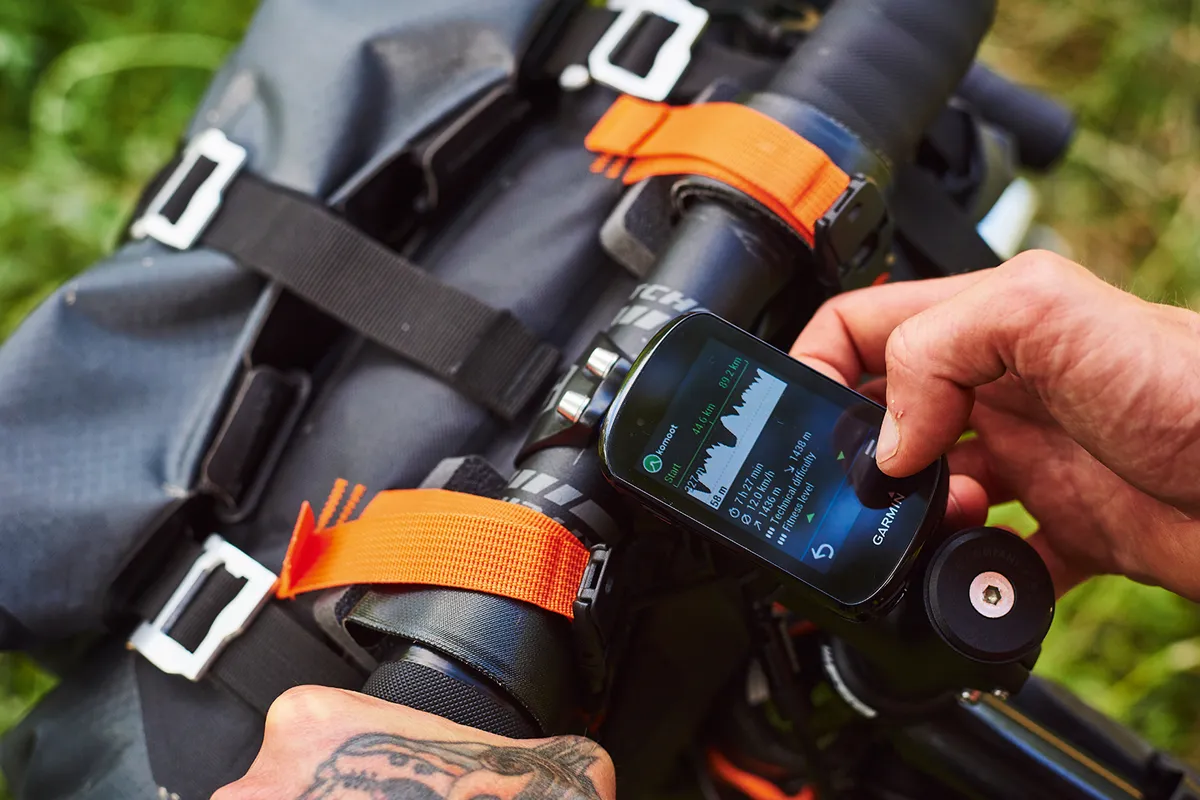
Perhaps the biggest question when choosing a GPS unit is deciding whether you want it to guide you on a ride via maps and navigation, or if you simply want it to track your ride and give you the data to look back at after your ride.
Generally speaking, navigational GPS units will cost more because they feature built-in maps, additional storage, navigation software and often a much larger screen to make use of all of this information.
Devices that offer mapping and directional guidance have come a long way. GPS accuracy has greatly improved, guiding you to within one or two metres of a desired location.
Far more tracking GPS units are sold than those that include navigational aids. For most riders, all they want is live ride data with the option to undertake detailed analysis after a ride.
However, they don’t offer nearly as detailed navigational information, and often only offer ‘breadcrumb’ navigation, which overlays a simple line over a blank screen for you to follow.
Connectivity
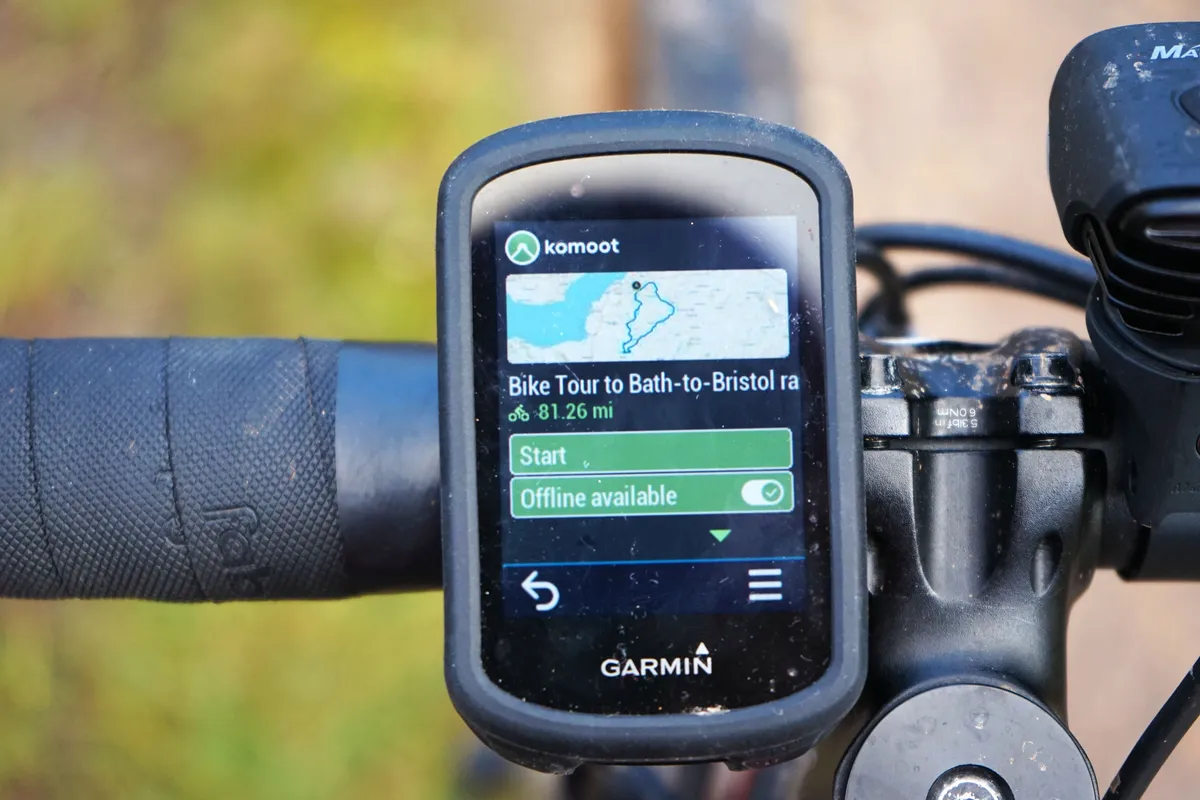
Mobile phone connectivity is desirable for a number of reasons. The likes of the Garmin and Wahoo offer Bluetooth and ANT+ connectivity and share information with compatible phones.
Many bike computers now include a giddy array of features when linked up to phones and other sensors, including incoming call and text alerts, tracking which allows your riding buddies or family at home to see your location in real-time, and even which gear you are in with electronic drivetrains.
Bluetooth and ANT+ cycling computers will link up to external sensors so you can pair them with devices such as heart rate monitors, cadence sensors, speed or power meters, and more. This unlocks a whole host of possibilities and can help you step your training up a notch.
Most high-end cycling computers will also neatly integrate with third-party cycling apps such as Strava, TrainingPeaks and Komoot.
Some will also link with WiFi for automatic uploads, avoiding any need to upload your ride via Bluetooth once you get home.
Cycling computer training functions
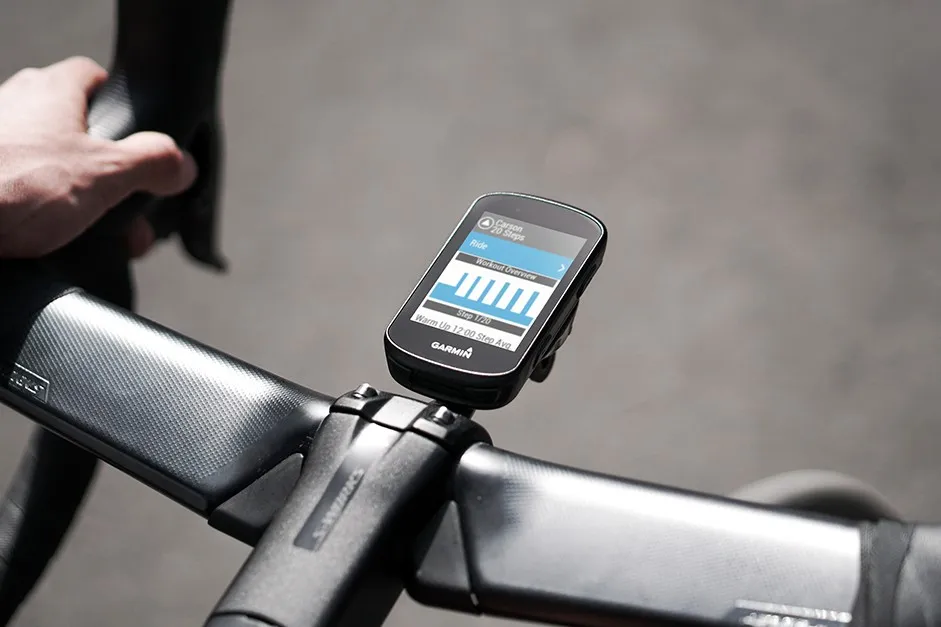
The main and most familiar way cycling computers can aid training is by linking up to a power meter or heart rate monitor, providing live data about your power output or heart rate during your ride.
There are benefits and disadvantages to both and many things to consider when deciding whether heart rate or power training is best for you.
Beyond simply providing live readouts for auxiliary devices, some cycling computer brands claim their computers can use this data to establish VO2 max and FTP (Functional Threshold Power), as well as provide insight into needed recovery time and training load.
Various bike computers now come with the option to load workouts and training plans directly onto the computer, making structured training an easier affair.
These plans are either available through brand-specific software (Garmin Connect for Garmin computers, for example) or in some instances through apps such as TrainerRoad and TrainingPeaks.
Some other features available on cycling computers are framed as training tools but are also useful and enjoyable for cyclists who are just out riding for the fun of it. These include alerts signalling how much longer a climb is and live Strava segments introducing some friendly competition against others or your own personal bests.
How does a cycling computer mount to the bike?
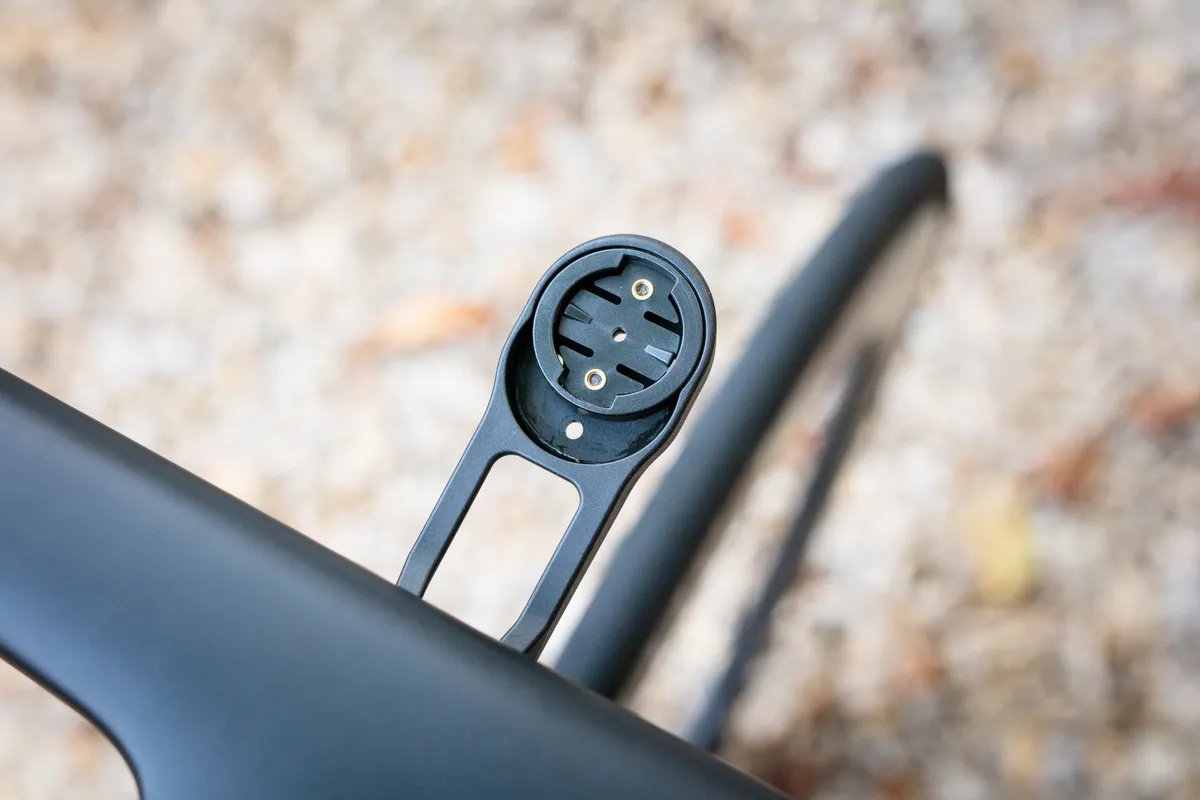
A key factor, but one that’s easily overlooked, is how the device attaches to the bike.
Most GPS units attach to either the handlebar or the stem of the bike. Generally speaking, the more common the brand, the more available mounting options there will be.
Garmin is the leader in this area, with scores of aftermarket mount options allowing you to decide exactly how and where the device sits on your handlebar or stem.
Gamin and Wahoo use mounts that rely on a quarter-turn twist-lock to hold the computer in place. The 90-degree turn makes it easy to fit your computer but also easy to remove when popping into a shop or cafe.
Out-front mounts are a popular choice because they put the computer in front of the bar, making it easier to look at while moving. These mounts also make the cycling computer flush with the bar, giving a cleaner look for the more aesthetically minded.
Screen size and display type

As a general rule, the larger the screen size, the easier the information will be to read. You’ll also be able to show more information on the screen without having to scroll to another page.
Of course, the downside is that larger units can be cumbersome, crowd your handlebar, and add extra heft – offending the more weight-conscious riders among us.
Screen size and resolution are a bigger concern if you want to use a cycling computer for routes and navigation. Here, being able to see waypoints and your desired route is crucial, so a screen size of 2.5in (6.35 cm) or larger is advisable.
Colour displays are becoming the norm, which makes for easy reading, especially with detailed maps.
Some cycling computers still use a greyscale screen, because these can be more readable in bright light.
Touchscreens are becoming a standard on newer devices too because they help simplify toggling menus and selecting desired data.
Mapping
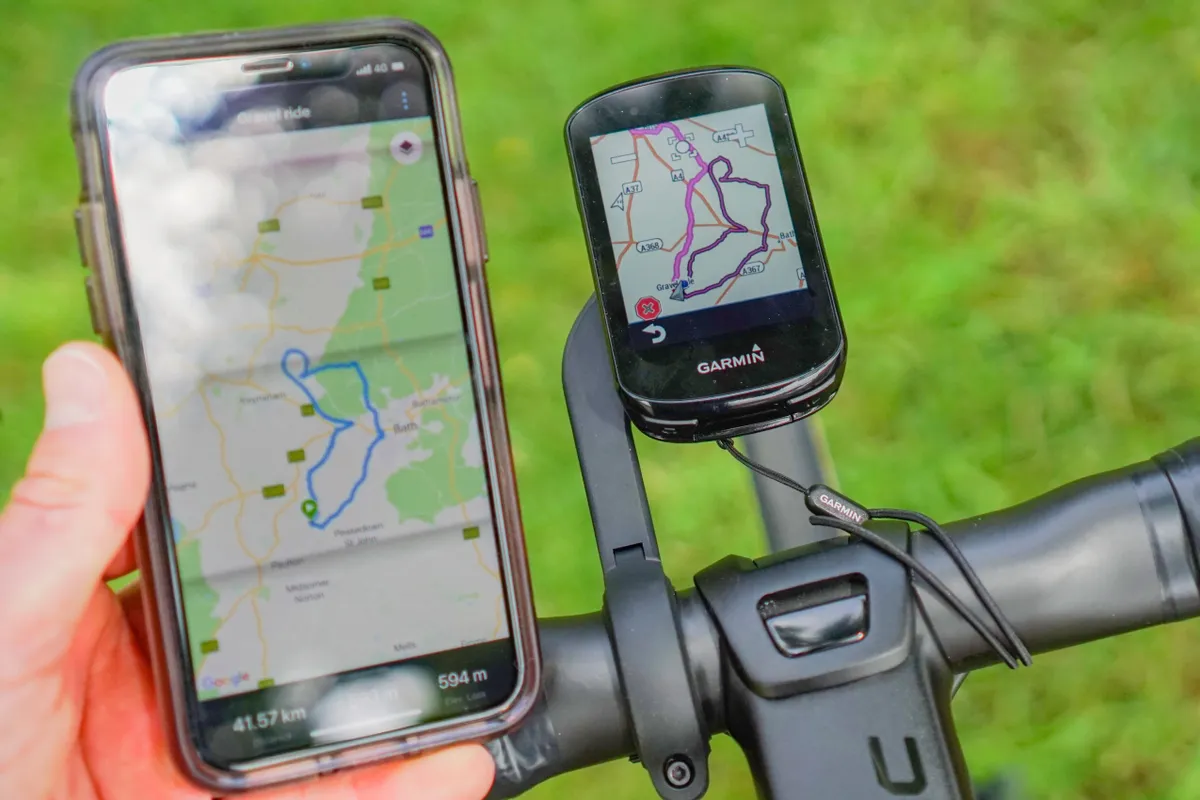
Early GPS cycling computers offered turn-by-turn navigation via a snail trail (also known as a breadcrumb trail).
Snail trails didn’t really give enough information because they were simply displayed as a single line over a blank screen with no landmarks or surrounding roads detailed, but you could get a fairly good sense of where you were going and were often notified if you drifted off course.
Now, many cycling computers are pre-loaded with in-depth maps that are similar to topographic maps detailing roads, landscape, features, waypoints and any amenities. This is particularly useful for bikepacking but is great even if you're cycling somewhere unfamiliar on holiday or close to home.
Maps often only cover certain territories. For instance, in the UK, the Garmin 1030 Plus comes pre-loaded with maps for Europe and North America, but you will have to download maps for other regions.
Plenty of computers allow you to sync courses from route-building apps such as Ride With GPS or Komoot, and in some cases let you drop a pin on the computer’s map and will automatically route you to that location.
Battery life
Are you looking to complete long rides, multi-day adventures, or simply want to go out and not worry about having to recharge your device between training sessions?
If any of these sound familiar, it is probably worth seeking out a cycling computer with decent battery life. Many computers will have a claimed battery life of between 15 and 20 hours, but this is of course dependent on use. Some Garmin computers now feature solar charging to increase battery life.
External battery expanders can bump up the battery life of your cycling computer if you’re out for a particularly long time.
Alternatives to GPS cycling computers
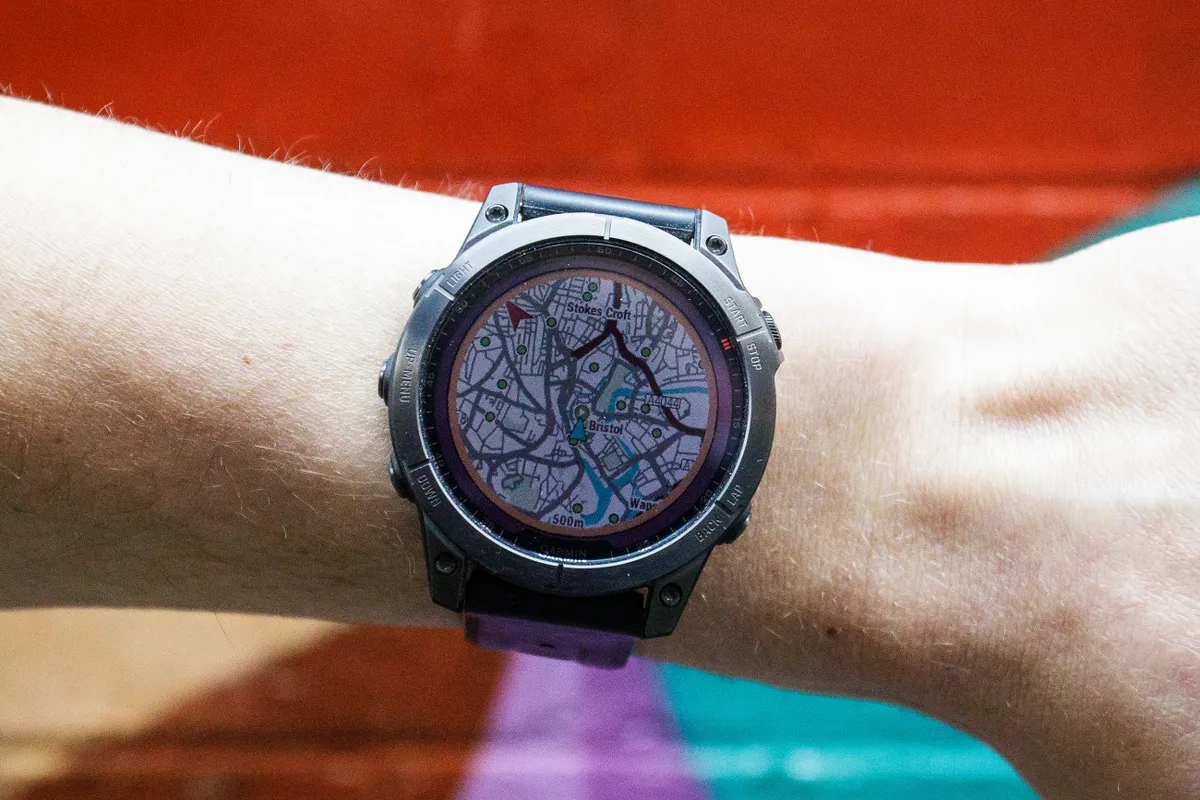
While this buyer’s guide is dedicated to GPS units, there are viable alternatives to GPS cycling computers in the form of GPS watches and smartphones.
GPS watches
Many of the best cycling watches will record your cycling data much like a GPS cycling computer. They have the added benefit of having built-in heart rate monitors but don’t have the same mapping and navigation capabilities as many cycling GPS computers.
If you do more than cycling – for instance running, swimming or indeed triathlon – GPS watches are a good choice for their versatility. But a major downside to these devices is the smaller screen size, so if you’re planning to keep the device on your bike, you’re better off with a cycling-specific unit.
Smartphones
Smartphones are ideal if you’re looking for a way of navigating around town and don’t want to invest in a dedicated cycling device, or simply dip a toe in the world of GPS navigation and ride recording.
Smartphones can be used with apps such as Strava and might prove just as useful as a cycling computer for casual riding.
There are many smartphone handlebar mounts and cases available to keep your phone safe and secure while riding, but they are likely to be less waterproof than cycling-specific computers. That said, keeping the phone in your pocket or pack remains an option for data collection.
